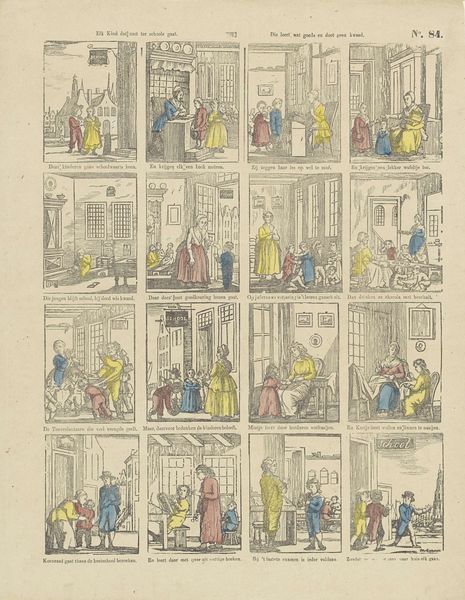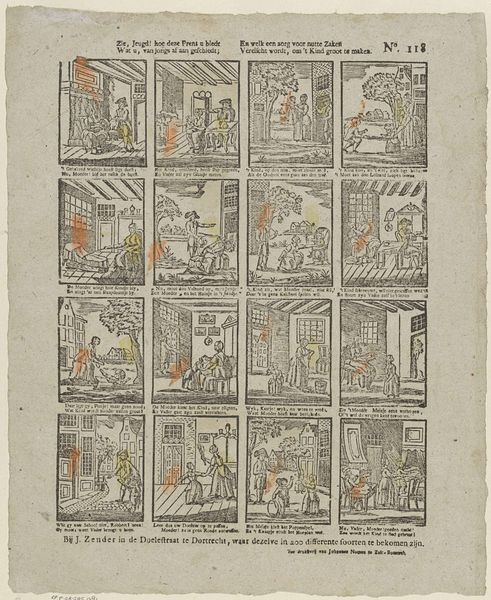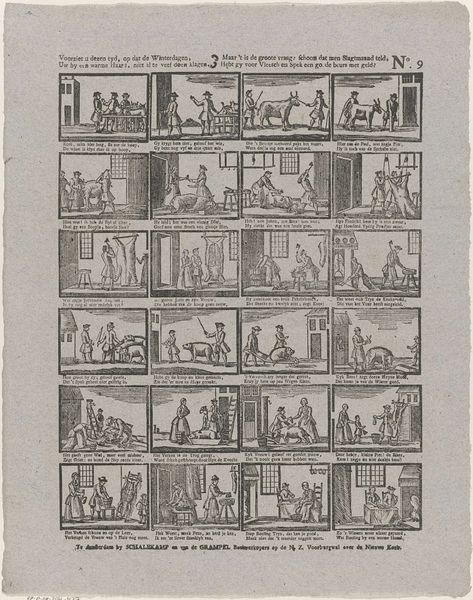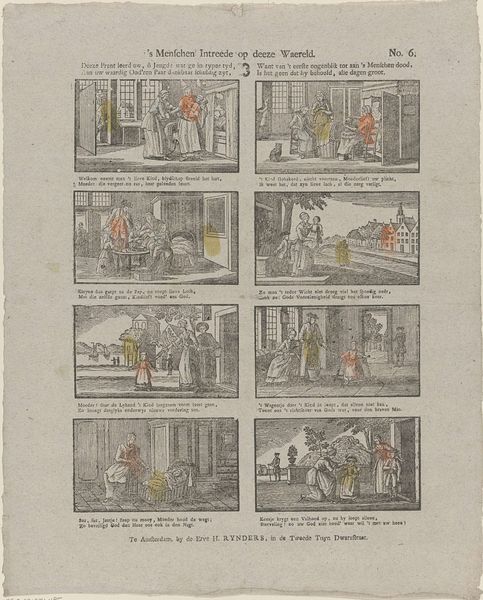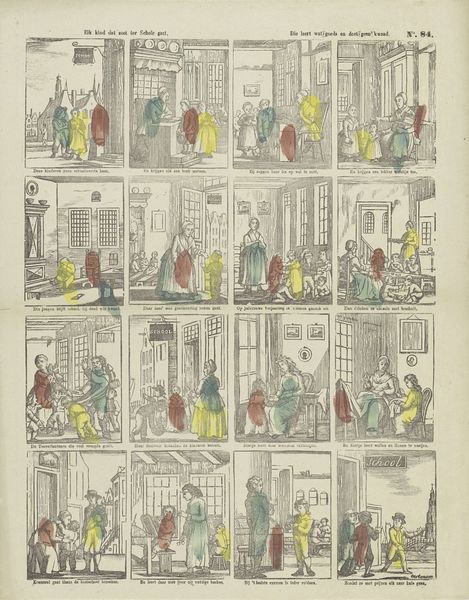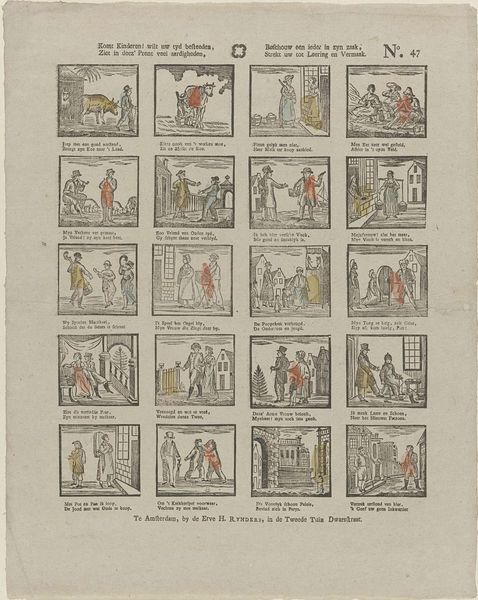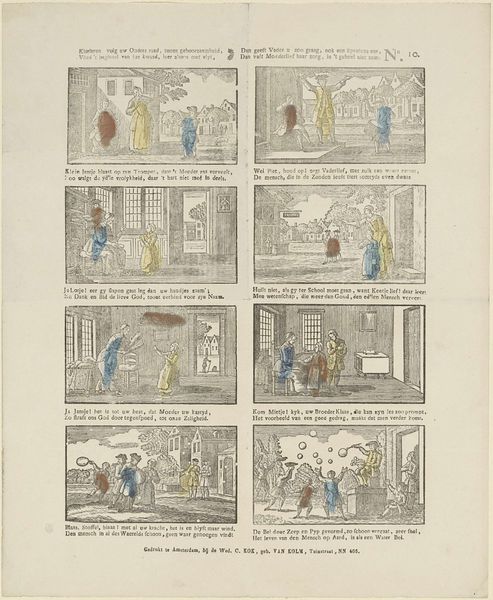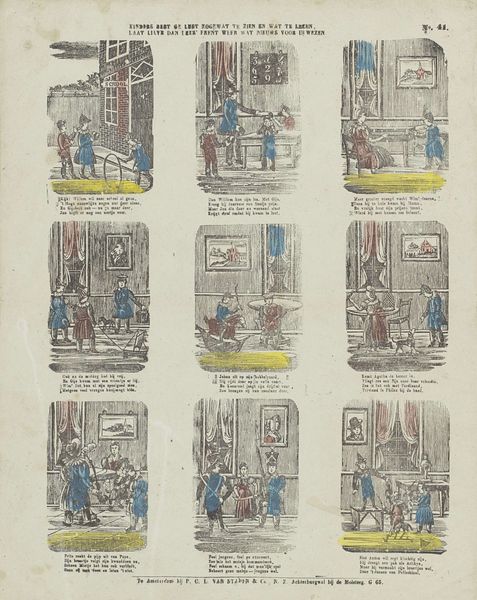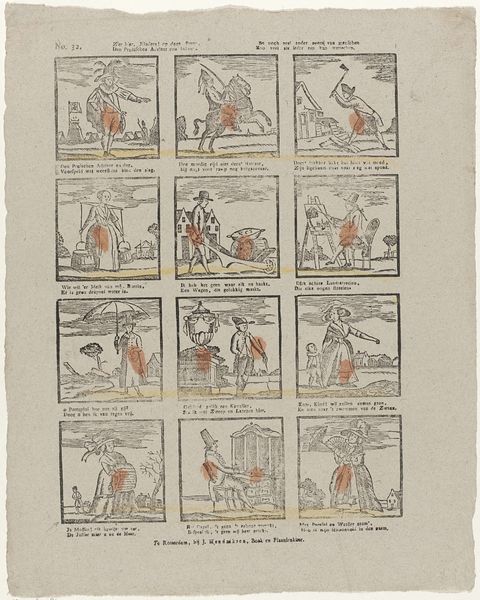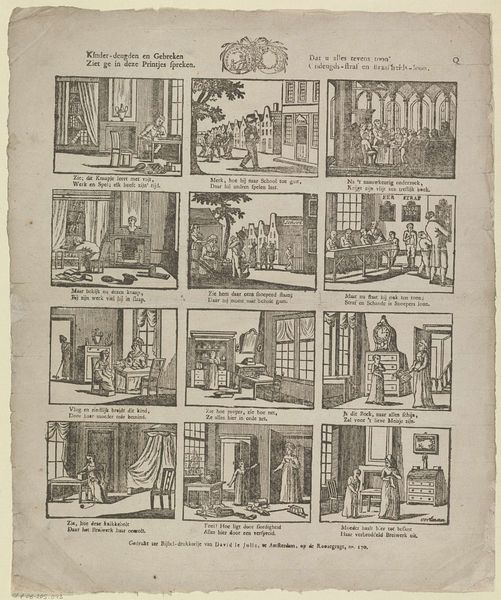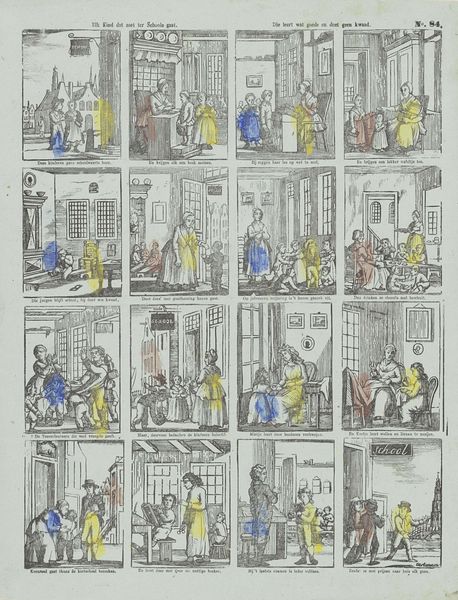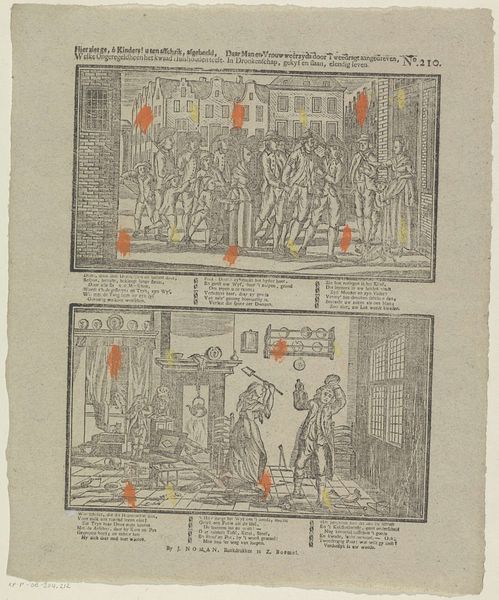
Al wie dat zoet na school toe gaat, / Die leert wat goeds en doet geen kwaad 1806 - 1830
0:00
0:00
jansroortman
Rijksmuseum
print, engraving
#
comic strip sketch
#
narrative-art
#
dutch-golden-age
# print
#
figuration
#
comic
#
line
#
genre-painting
#
academic-art
#
engraving
#
miniature
#
realism
Dimensions: height 413 mm, width 335 mm
Copyright: Rijks Museum: Open Domain
Curator: Before us is “Al wie dat zoet na school toe gaat, / Die leert wat goeds en doet geen kwaad,” a print dating from between 1806 and 1830, and currently held in the Rijksmuseum collection. It's attributed to Jan Oortman, Sr. Editor: My first impression is of a primitive comic strip—a sequence of vignettes laid out in a grid. It feels quite naive, almost childlike. Curator: Exactly. The artist is employing the engraving technique to produce something of a narrative, intended for a wider, perhaps even a popular audience. We might think of this as early graphic storytelling, utilizing cheap, reproducible materials to spread its message. Editor: The formal use of line is fascinating here, each tiny narrative is etched with such careful detail, but it also creates a very flat, graphic quality. There’s almost no illusion of depth, even with attempts at perspective. Curator: These types of works were made to be widely disseminated, inexpensive prints, which allows greater access to education and moral tales for those outside of aristocratic circles. The printmaking workshops become important sites of production and cultural transmission. Editor: Yes, and the didactic tone! “He who goes sweetly to school, learns good and does no harm." The title itself, presented like a banner across the top, immediately sets up a rather moral framework for viewing. I notice each scene depicts children in various situations involving school and, I assume, the consequences of both good and bad behavior? Curator: Precisely. Considering the historical context, we see this as a form of social conditioning. This is a production to manage behavior by way of depicting potential actions and the outcomes from partaking in such decisions. Editor: Well, for me, the artistry comes not only from the skillful hand, but in the subtle narrative constructed. We are provided these brief insights of 18th-century life; not to examine class and economy, but rather through morals. Curator: It certainly invites questions regarding accessibility to these educational devices within the population. What labor practices would this employ and how do the modes of productions relate to the subject within the miniature artworks? Editor: Indeed. These close readings provide many diverse interpretations which can transform understanding. Curator: That is indeed a worthwhile takeaway from analyzing it.
Comments
No comments
Be the first to comment and join the conversation on the ultimate creative platform.
